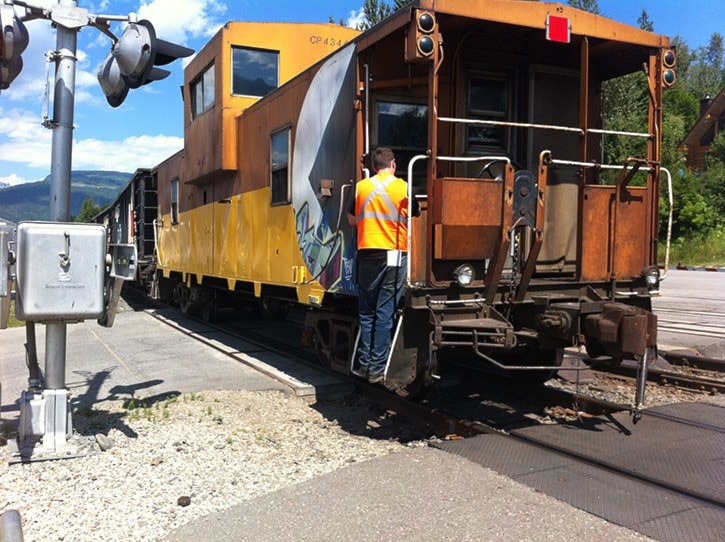Editor,
In response to the Aug. 14 letter to the editor from Kevin Hrysak, CP Public Affairs, I would like to share my view of rail safety in Canada.
Congratulations to Rob Buchanan for touching on this subject with his always entertaining cartoon. This is what good satire does, it sparks debate.
Rail safety is on the highlight reel right now due to the tragic accident and horrific loss of life in Quebec. Many years ago a tragic accident in Hinton, Alberta sparked a similar debate and investigation which resulted in many operational changes on both major railways in Canada. In the Hinton, Alberta accident, it was discovered that employee fatigue was the most significant factor that caused this event to occur. It is unclear at this point what specific causes contributed to the Quebec tragedy. I would suggest that again, fatigue played a part in this. The investigation of this could take months or even years.
Mr. Hrysak suggests in his letter to the editor that employees are pleased with the safety and operation of CP Rail under the guidance of Hunter Harrison. A previous news article in this paper would seem to suggest otherwise. I as well would opinion that the safety on the railways is not being enhanced under Mr Harrison’s leadership.
It is no secret that Hunter Harrison has taken steps to cut the number of employees to the bone. As well he has clearly made attempts to undermine and eliminate local rules, many which have been in place for years. Many of these “rules” were put in place to mitigate and improve fatigue management of employees specifically in the running trades. One must keep in mind that running trade employees have no specific days off and are required to work at all hours. Under Mr. Harrison, engineers and conductors are now working longer hours with less time off. As well there has been a sharp increase in the amount of time they are required to sit at the away-from-home terminal waiting for a return trip. To suggest that this is leading to a safer operation is a fantasy at best.
In reality most employees now operate with the fear of dismissal if they miss work or delay a train for any reason. Once, near the end of my career, I found myself in a position where I felt I could not take a call to work and operate safely as I had been unable to obtain proper sleep. I did what I felt was the responsible thing and did not go to work. The result was I was investigated, and then disciplined by the company. It took a call to Transport Canada, and investigation of this event to get the corporation to back off and clear my record. This is the reality of what is actually happening under the guidance of the new CP management.
Transport Canada, and their role in the Quebec accident should also be put under the microscope. Transport Canada allowed this company to operate with a one-man crew. Was this a factor in this accident? I would suggest it was. This was simply again a cost-saving measure and was not motivated by safety.
The Federation of Canadian Municipalities (FCM) have now formed a committee to look at rail safety in Canada. Many communities, Revelstoke included, have rail systems running through them and are on edge after seeing the Quebec tragedy unfold. FCM, through this process has also said they have concern about the role of Transport Canada. Is Transport Canada doing a good job enforcing and developing safety legislation? It is my opinion that they are not fulfilling this mandate.
In the aftermath of the accident in Hinton, Alberta, the government of the time forced the railways to adopt sweeping changes to the work/rest rules for running trades employees. Sadly, it has not gone far enough, or been effective in mitigating fatigue of employees. To be fair, the union and employees need to share in this shortfall as well. There is always a resistance to change. Prior to Mr. Harrison coming to CP Rail, the union and company looked at going to a different model for running trades employees. This gained little traction and in most cases was not even tried.
There are many questions that will need to be answered about this tragic accident in Quebec. Sadly, we have seen this before. Just like the Hinton, Alberta accident, time will heal the wound. Will it effect change? I say, probably not. Will the FCM be able to push hard enough to get Transport Canada to mount a charge on enforcement? Likely not.
As Mr. Hrysak suggests, Revelstoke and CP Rail have a deeply rooted history. Once again, the safety of the rail operations in Canada is now, and should always be open to debate. As well, as is always the case, there are many different opinions and views on this.
Gary Starling,
Retired engineer
Revelstoke
